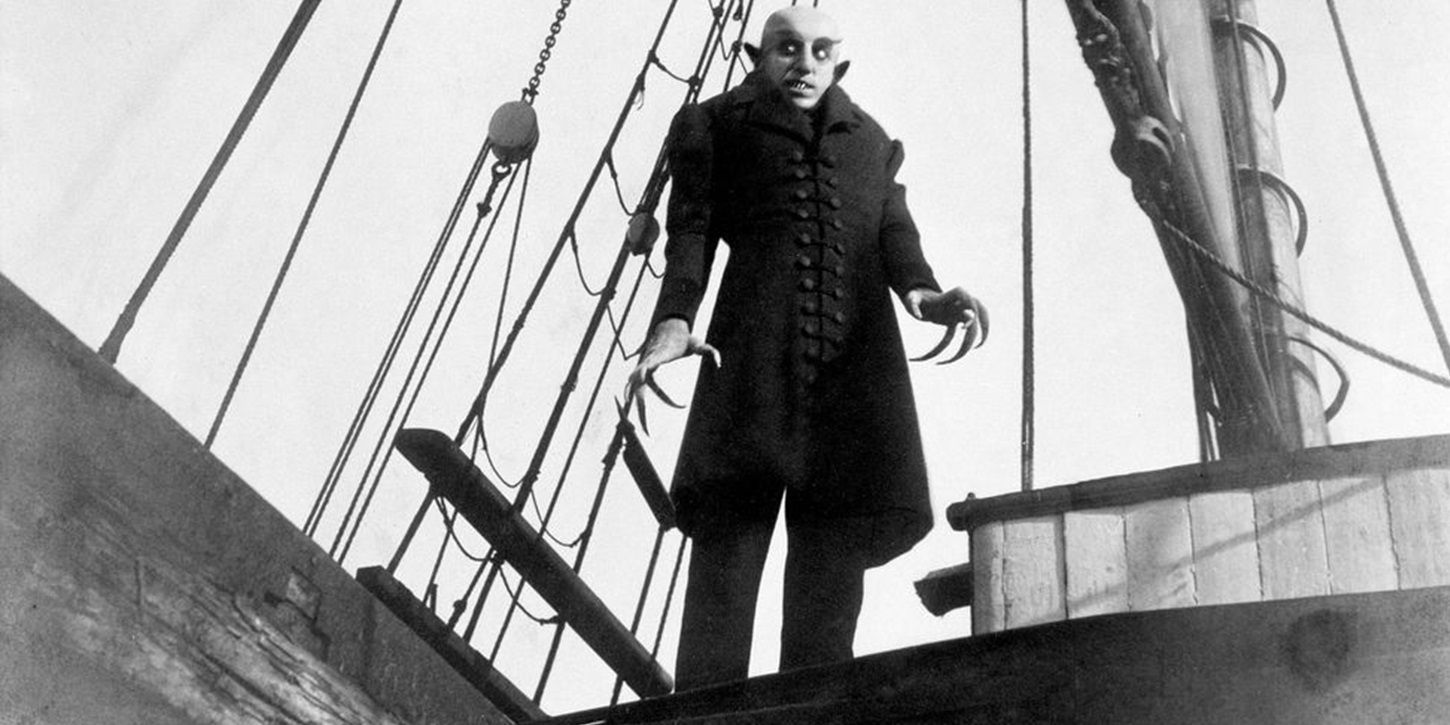Nosferatu art offers a haunting look at F.W. Murnau’s 1922 Dracula adaptation starring Max Schreck as the hideous vampire. Nearly a decade before Bela Lugosi made Bram Stoker’s famed bloodsucker his own, German filmmaker Murnau crafted his own unofficial adaptation of the most legendary of all vampire books, changing the lead character’s name to Count Orlok for legal reasons. Now considered an early classic of the horror genre, Murnau’s film inspired a 1979 remake by Werner Herzog, and is about to be remade again by The Northman director Robert Eggers.
As horror fans eagerly await Eggers’ Nosferatu remake, comic artist Francesco Francavilla offers up his own interpretation of the original movie’s otherworldly character, sharing his creepy art on social media. Check out the image in the space below:
The comic style of Francavilla’s Orlok does not downplay the character’s bizarre appearance, complete with bald head, rodent-like teeth and grasping claws.
The Original “Dracula” May Have Been The Scariest

Actors like Lugosi would later make Dracula a sexy villain, portraying the character as elegantly sinister. There’s nothing elegant or sexy about Schreck’s Orlok however, as Murnau’s film makes the character fully monstrous, and deeply unsettling. This creepy take on Dracula would later be taken up by Herzog in his Nosferatu the Vampyre, which cast the infamous Klaus Kinski as the monster. In Eggers’ upcoming new version, Orlok will be played by Bill Skarsgård of Pennywise fame.
It’s yet to be seen how closely Eggers and Skarsgård’s Orlok will stick to the character as conceived by Murnau, but it will take some doing for their Nosferatu to match the 1922 film for pure eeriness. The film vampire has obviously evolved over the century since Murnau kicked things off with his unofficial Dracula adaptation, opening up all sorts of different doors in terms of interpretation. But when it comes to capturing the pure visual horror of the vampire, it can be argued that Murnau set the bar so high, no one else has ever gotten over it.




